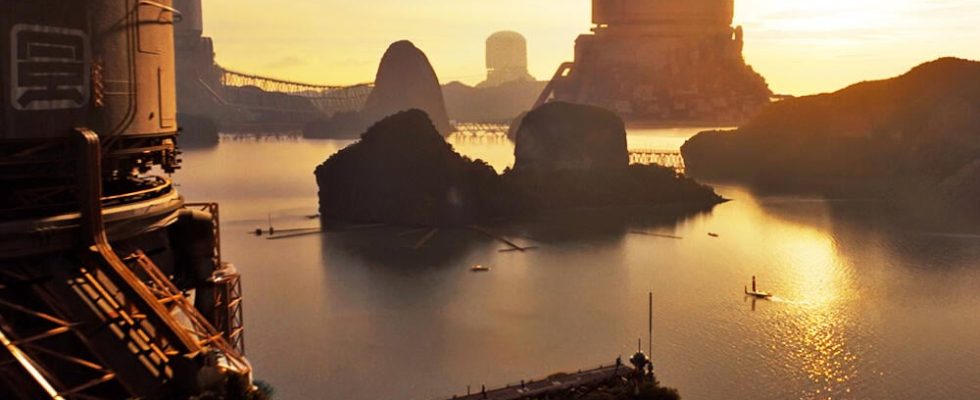Few filmmakers have had such a stellar career in Hollywood as Gareth Edwards. He celebrated his breakthrough in 2010 with the independently produced Monsters. After that he led two of the biggest sci-fi blockbusters of the past decade: Godzilla (2014) and Rogue One: A Star Wars Story (2016).
Both films had huge budgets and are therefore representative of a film industry that has forgotten how to to use their resources consciously. For Godzilla, Edwards had $160 million at his disposal. Rogue One is said to have cost up to $100 million more.
The sci-fi film The Creator avoids the mistake that is currently the downfall of many Hollywood blockbusters
The cost of Hollywood blockbusters now easily exceeds $300 million, which leads to a problem: The films have to gross more and more to become profitable, but very few reach that point. With The Creator, Edwards has the production of a sci-fi blockbuster rethought.
You can watch the trailer for The Creator here:
The Creator – Trailer (German) HD
Based on the trailer, The Creator looks like it also has a budget of $200 million. Lots of different locations, elaborate effects and a story that promises a gripping sci-fi epic: it actually has film only cost $80 millionwhich is well below the average of its blockbuster counterparts.
How did Edwards do this?
At the international press conference for The Creator, the director explained that he has reversed the order of processes that take place in the production of such a blockbuster. So he could in the end more efficient and cost-conscious work.
If you watch a film like [The Creator] turns, you imagine a whole world. A lot of concept drawings are created. You show them to the studio. And the studio says, ‘You won’t find locations like this anywhere. A soundstage has to be built for this. The film will cost $200 million. And you’re shooting against a green screen.’ I said, ‘No, no, no, no, no, no, no. Forget all those pictures. These are just ideas. We design the film based on what we actually shoot. We’re basically making the film in reverse order.’
With The Creator, Edwards went back to his indie roots and worked with a small crew as much flexibility as possible to get.
If the crew is small enough, the costs are manageable and you can do it fly anywhere in the world, instead of building an expensive set. The volcanoes of Indonesia, Buddhist temples in the Himalayas, ruins in Cambodia and floating villages – we shot in eight different countries and were able to easily choose the best locations for the scenes as if we were shooting an independent film.
Disney
The Creator
Afterwards Edwards had a large amount of the post-production budget left over, in which he accommodated many processes that he shortened in pre-production.
Then we edited the film, took frames from each shot and sent them to production designers [James Clyne] have passed on. We have moved the processes that normally take place a year and a half beforehand into post-production. [Clyne und sein Team] just put all the sci-fi elements over the pictures, that we actually use. So you never paint left and right beyond the frame. This makes it very efficient. You work exactly on what you really see.
This approach probably cannot be transferred to every production. With The Creator, Edwards still has created an exciting modelmodeled on many Hollywood blockbusters that can handle bloated budgets without losing scale.
Sci-Fi highlight: When does The Creator start in cinemas?
You can find out for yourself in a few days whether the result that Edwards and his creative team created is convincing. At the September 28, 2023 The Creator opens in German cinemas and takes you into a world in which a war has broken out between people and machines with artificial intelligence.
*. If you purchase through this link, we will receive a commission.
